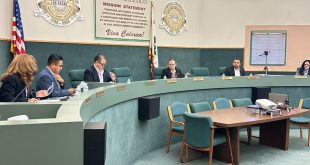
Compiled by Dr. Elton Gómez, scientist and stem cells specialist.
One of the most dangerous spiders in the world and whose bite causes a picture called loxocelism, is the spider whose scientific name is loxoceles laeta, also known as spider of the corner or violinist spider, by the violin shape that flaunts its body.
Of Chilean origin, it has been naturalized and adapted to several places in the world, it likes dry places and desert places, and in particular it likes dark and little neat places, hence its nickname “spider of the corner”.
Its bite is not very painful, and usually occurs at night since it is nocturnal, usually on the face and extremities, it produces a lesion in the form of a purplish-violet center, surrounded by an area of redness, after a time this lesion produces an area of necrosis, with formation of superficial scab, but with high penetration power in the tissues, because the spider injects necrotizing toxins and a load of microorganisms, tissue liquefaction occurs below the lesions, in 90 percent of cases, escarectomy with additional cleaning is required. In the other 10 percent, in addition to the cutaneous manifestations, a picture called visceral loxosis is produced, which begins with general symptoms such as fever and malaise, and later vomiting, joint pain, anemia, jaundice and hematuria due to intravascular hemolysis are added.
 Here the report (recovery time 7 months):
Here the report (recovery time 7 months):
Female patient of 33 years of age, poorly controlled diabetic, receives sting in the right ankle area, while doing cleaning work outside her home, collecting logs from a pile to make firewood, with an initial erythematous welt, evolves in the following hours to a painful violaceous lesion, goes to hospital, receiving treatment with naproxen of 500 mg once a day, says that they assured her to neutralize the poison, goes to the service of this clinic, a week and a half later, presenting abscess with start of formation of necrotic eschar, drainage of the abscess is done, and escarectomy, and meticorten takes 5 mg, half a tablet every 12 hours, with insulin lantus for better control of diabetes, sample is taken for culture with antibiogram and antibiotic therapy is established with Ceftriaxone at a weight-dependent dose, while the results are obtained, sessions of hyperbaric oxygen therapy are applied, three times a week, at a pressure of 2.5 Atas, with a venturi mask, improvement of the infection is observed, and healing is continued using sterile solution, and application of nanoparticles gel twice a day. Patient receives results of antibiogram, with Clostridium spp., mycobacterium spp, staphylococcus aureus, which are microorganisms that frequently colonize lesions by Loxoceles, sensitive to amikacin and ceftriaxone, due to the patient’s diabetes condition and the possible renal lesion of loxodium venom, an injury is observed that could be aggravated by the application of amikacin, even at standardized doses, it is ruled out to start treatment with amikacin and continue with antibiotic therapy with ceftriaxone, the dose of meticorten is reduced to a quarter of a 5 mg tablet twice a day to avoid symptoms due to sudden deprivation, hyperglycemia occurs with associated intestinal constipation, which yields with hydration treatment and high-residue diet, thus ruling out viceral loxocelism, there is a good response to treatment, with formation of new tissue in the area of injury and initial abscess, but there is a restriction of movement itself in the ankle joint due to the scarring of the area, debridement and dermabrasion of the scar is done, achieving improvement in movement.





